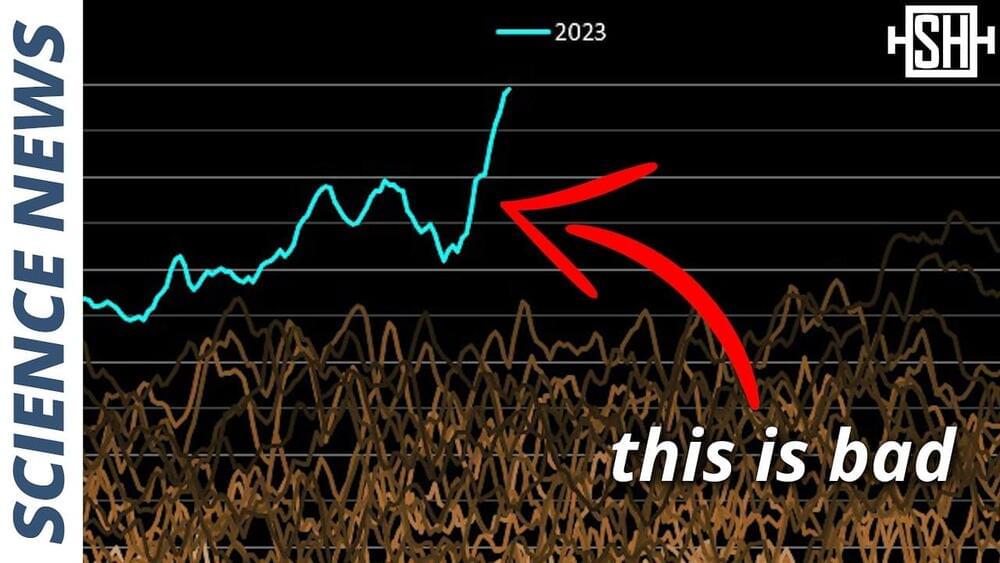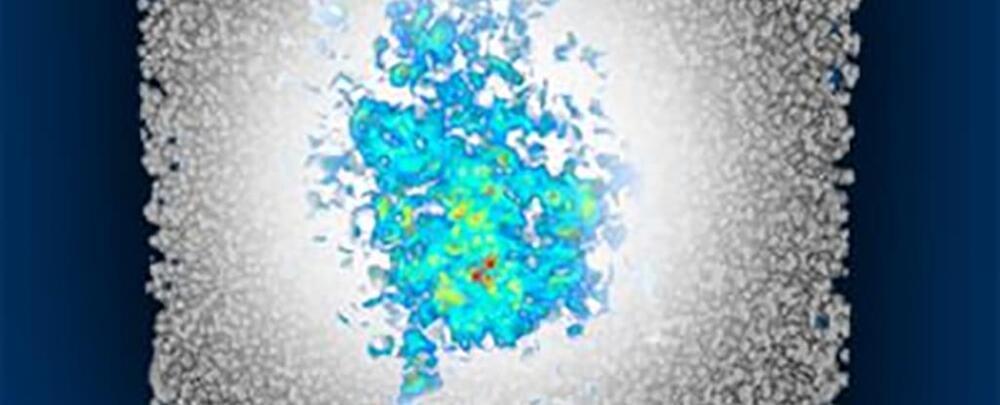Page 2770
Jun 21, 2023
Will Artificial Intelligence Help Us Talk to Animals?
Posted by Zack Miles in category: robotics/AI

Artificial intelligence has made remarkable progress in recent years, but can it help us talk to animals? Explore the possibilities and limitations of AI in communicating with other species.
Jun 21, 2023
Microsoft says its weird new particle could improve quantum computers
Posted by Paul Battista in categories: computing, particle physics, quantum physics
Researchers at Microsoft say they have created elusive quasiparticles called Majorana zero modes – but scientists outside the company are sceptical.
Jun 21, 2023
95% of the Universe is a total mystery
Posted by Paul Battista in categories: biotech/medical, computing, internet
That’s the ordinary matter of everyday life: your hair and clothes, your atoms and organs, the food you eat and the dogs that kiss you, the air and the sea, the Sun and the Moon. Everything we know — everything we see — is just 5% of everything in the Universe.
The remaining 95% of the Universe is stuff that we can’t see, don’t yet understand. An extraordinarily vast portion of the cosmos is still unknown. Despite the technological advancements of the last century, even with computers at our fingertips and the worldwide internet and space-based observatories mapping the far reaches of our Universe, there is still so much that we don’t understand.
We have grown leaps and bounds since the days of the ancient Greeks and Egyptians, even since Copernicus and Kepler. But in many ways, we are still novices playing with toy models seeking to understand the stars.
Jun 21, 2023
“Hydration Solids”: The New Class of Matter Shaking Up Science
Posted by Paul Battista in categories: biological, chemistry, particle physics, science
For many years, the fields of physics and chemistry have held the belief that the properties of solid materials are fundamentally determined by the atoms and molecules they consist of. For instance, the crystalline nature of salt is credited to the ionic bond formed between sodium and chloride ions. Similarly, metals such as iron or copper owe their robustness to the metallic bonds between their respective atoms, and the elasticity of rubbers stems from the flexible bonds in the polymers that form them. This principle also applies to substances like fungi, bacteria, and wood.
Or so the story goes.
A new paper recently published in Nature upends that paradigm, and argues that the character of many biological materials is actually created by the water that permeates these materials. Water gives rise to a solid and goes on to define the properties of that solid, all the while maintaining its liquid characteristics.
Jun 21, 2023
Scientists develop new technique to peer into the genome’s spatial architecture
Posted by Paul Battista in categories: biotech/medical, electronics
People who owned black-and-white television sets until the 1980s didn’t know what they were missing until they got a color TV. A similar switch could happen in the world of genomics as researchers at the Berlin Institute of Medical Systems Biology of the Max Delbrück Center (MDC-BIMSB) have developed a technique called Genome Architecture Mapping (“GAM”) to peer into the genome and see it in glorious technicolor. GAM reveals information about the genome’s spatial architecture that is invisible to scientists using solely Hi-C, a workhorse tool developed in 2009 to study DNA interactions, reports a new study in Nature Methods by the Pombo lab.
With a black-and-white TV, you can see the shapes but everything looks grey. But if you have a color TV and look at flowers, you realize that they are red, yellow and white and we were unaware of it. Similarly, there’s also information in the way the genome is folded in three-dimensions that we have not been aware of.
Jun 21, 2023
Record Temperatures in the North Atlantic
Posted by Ken Otwell in categories: climatology, computing, mapping, quantum physics, space
Lot’s of science news, stay till the end for the climate stuff.
Expand your scientific horizon with Brilliant! Use our link https://brilliant.org/sabine You can get started for free, and the first 200 will get 20% off the annual premium subscription.
Continue reading “Record Temperatures in the North Atlantic” »
Jun 21, 2023
Waves of Light Can Be ‘Frozen’ in 3D Materials, According to a New Simulation
Posted by Paul Battista in categories: particle physics, quantum physics
Scientists have solved a decades-long mystery on whether light can be effectively trapped in a 3D forest of microscopic particles.
Using a new method for crunching vast sums in a model of particle interactions, a team of physicists in the US and France revealed conditions under which a wave of light can be brought to a standstill by defects in the right kind of material.
Known as Anderson localization, after US theoretical physicist Philip W. Anderson, electrons can become trapped (localized) in disordered materials with randomly distributed abnormalities. Its proposal in 1958 was a significant moment in contemporary condensed matter physics, applying across quantum as well as classical mechanics.
Jun 21, 2023
Elon Musk stays mum on Titanic submarine disappearance despite Starlink connection
Posted by Kelvin Dafiaghor in categories: Elon Musk, internet
The sub disappeared on Monday, sparking a search for the vessel before it runs out of oxygen.
Jun 21, 2023
Apple planning to bring Wi-Fi 7 support to the iPhone next year, here’s what that means for you
Posted by Shailesh Prasad in category: mobile phones
Reliable analyst Ming-Chi Kuo is reporting that Apple is planning to adopt Wi-Fi 7 support on the iPhone as soon as next year. This could bring major improvements not only to speed and reliability, but also for the ability for different Wi-Fi 7 devices to interact with one another.
One of the biggest changes in Wi-Fi 7 is a dramatic increase in the maximum data throughput speeds. According to the Wi-Fi Alliance, Wi-Fi could offer peak data rates of more than 40Gbps, making it up to four times faster than Wi-Fi 6 And Wi-Fi 6E, and nearly six times faster than Wi-Fi 5.
In addition to those impressively fast speeds, Wi-Fi 7 will also introduce something called Multi-Link Operation technology. This will allow devices to simultaneously send and receive data over multiple radio bands. One of the biggest changes is an increase in the number of multi-user MIMO (multi-user, multiple input, multiple output) streams, doubling from eight to 16.

















